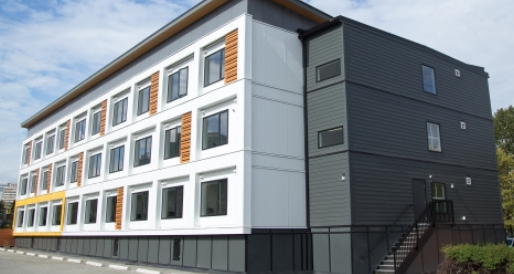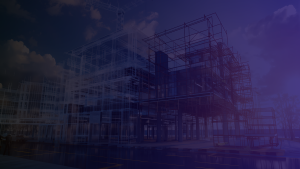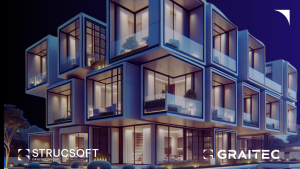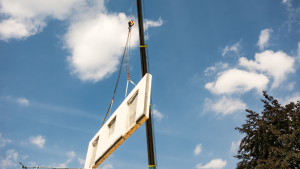
Thousands of years ago we would create structures to use as shelters from the elements. Years later the concept and function of construction has developed so vastly that there are now multiple categories you can divide the process into. Within this blog we will discuss a brief look into the differences between two categories: residential and commercial construction including how the modular building process has influenced each of them.
Residential construction
Residential construction are structures built for the intention of private occupancy. This isn’t limited to just single-family homes, condos, or your run of the mill mansion for the fortunate few – this can of course span to student accommodation and nursing homes.
With construction output in the UK being more than £110 billion per year and contributing to 7% of the GDP (gross domestic product), the importance of the construction industry plays a major part in a country’s developing economy. Residential construction can be categorized as making up approximately 40% of all construction.1
Residential construction has developed and diversified depending on the environment it will be situated in as well as the purpose. For instance, in student accommodation commonly situated in a central metropolitan area high rise steel frame structures are preferred.
Commercial Construction
Commercial construction differs from residential construction as this is the business of building and leasing or selling spaces in the private sector. These spaces can include but aren’t limited to offices, manufacturing plants, medical centers, and retail shopping centers.
The fact that there is a big emphasis on financial turnover, the criteria for these construction projects differ from residential. Because of some similarities they share it is individuals often collate commercial buildings to be held under one umbrella, however even within this category of construction there are subcategories present as well. For example, the Office for National Statistics (ONS) differs between commercial and industrial buildings with the following methodology2:

Commercial construction takes up 45% of the construction within the UK2. This is easy to understand when you see just how many different types of buildings it encompasses.
Influence of Modular Construction
In all things, time and knowledge allow for the development of an innovation/innovator that changes the way we perceive and do things. In basketball it was the introduction of the dunk pioneered by Bob Kurland, in music it was digitization and portable consumption of audio pushed by Sony’s ‘Walkman’ and in construction it is modular construction.
Modular construction, also known as prefabricated construction, is the process of creating buildings as pre-made parts and components which are made externally in a factory, then delivered and assembled on site. Within recent years this process of construction has gained more and more popularity within the construction industry due to its high build quality but also its ability to be long lasting and sustainable.
A few of the benefits of modular construction include:
- Its flexibility for both short term and long-term structures.
- Can be used in remote/rural areas where it would normally be difficult to construct in these areas.
- Modular building projects can be completed much quicker than traditional construction methods.
- Quality assurance and testing can be carried out within the safety of a factory with confined variables.
- Helps to reduce the average waste within a construction project as well as reducing build time.
- Can maximize energy efficiency through recycling materials, using LED lighting, installing solar panels and more.
This form of construction has benefited residential construction massively not only due to the benefits outlined above but because of variability in design. You can now see that many modular construction companies offer bespoke features and qualities within homes that can be swapped and adjusted where needed, due to the components acting as jigsaw puzzle pieces.
Likewise, it has also impacted commercial construction with its ability to implement new or update existing structures more easily and quickly to areas where the public may be actively using. For example, in schools it allows for a quick in-and-out process between term times. Workers are able to deliver and assemble the components at a much faster rate.
The growing use of modular construction has also yielded great benefit to the contractors as well as their employees. Those that now build houses in factories no longer have to travel to sites to complete works and they no longer have to work in potentially adverse weather conditions.
Influence on the BIMsoftware industry
With the ever-growing popularity of modular construction this has of course led to people seeking modelling alternatives to improve their design process of their panels. This has led to not only an increase in desire of our MWF (or Metal Wood Framer) software here at StrucSoft but continuous development of MWF in order to meet client’s building needs.
With its capability in creating layered panels for both walls and floors, generation of CNC and automation of shop drawing creation, MWF features are ready to tackle many hurdles in modular design. For more information on our modular tools, check out the video below
1. https://www.designingbuildings.co.uk/wiki/UK_construction_industry
2. https://www.designingbuildings.co.uk/wiki/Commercial_property_definition
For more information on our products or design services, visit strucsoftsolutions.com or email us at info@strucsoftsolutions.com.
 StrucSoft Solutions is the market leader in comprehensive Autodesk® Revit®-based BIM framing, with both off-the-shelf and custom solutions targeting the AEC and fabrication sectors. Our star solution MWF simplifies complex Revit® framing with its powerful range of tools for modeling, inter-trade clash detection, custom construction documentation and optional output to CNC machines.
StrucSoft Solutions is the market leader in comprehensive Autodesk® Revit®-based BIM framing, with both off-the-shelf and custom solutions targeting the AEC and fabrication sectors. Our star solution MWF simplifies complex Revit® framing with its powerful range of tools for modeling, inter-trade clash detection, custom construction documentation and optional output to CNC machines.






